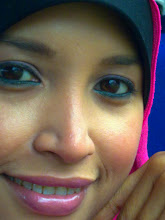The most common cancer and the number one cause of cancer deaths among women in the world is breast cancer. This cancer is caused by an uncontrolled growth of cells within the breast tissue.
If not detected and treated promptly, breast cancer can metastasise, spreading to the lymph glands and other parts of the body, including lungs, bones and liver.
There are two methods.
METHOD 1
Look for changes by standing in front of a mirror.
Pay attention to the size, shape and symmetry of your breasts and the level of both nipples.
Some of these factors include:

Step 1
View your breasts in front of a mirror.
Step 2
Raise both arms above your head.
Examine your breasts from different angles
With your arms at your side,
turn from side to side.
Tighten your chest by placing your hands on your hips and pressing down, applying pressure inwards.
METHOD 2
Feel for changes while lying down.
Begin with your right breast. First, lie on your left with your knees bent. Place a pillow or folded bath towel underneath your right shoulder to raise the side you are going to examine. Then, place your right hand under your head. Use your left hand to examine your right breast. Hold your fingers flat to feel for any lumps or thickening.
Examine your breast using both the Vertical Strip Method and the Circular Method.
Examine your breast using both the Vertical Strip Method and the Circular Method.
The whole breast area in a vertical strip pattern, from the collarbone at the top to the bra-line at the bottom, and from midway between your breasts to an imaginary line down from the middle of your armpit. Using your left hand, begin the first strip at your armpit. Make a circle of light and then firm pressure at this spot to feel for any lumps or thickening.
Move your hand gradually towards the bra-line, using circles of light and firm pressure at each spot. At the bottom of the bra-line, move across about two centimetres to the left and start working upwards to your collarbone, making circles all the way. Work up and down in strips, and cover the full area indicated.
Starting at the top of your breast, make a large circle. Move all around the breast, looking for any unusual lumps or thickening. Do this twice, once with light pressure and again with firm pressure. Do not forget to examine below the areola (dark area).

Checking for Nipple Discharge
With both hands, apply firm pressure on the breast to see if there is any unusual discharge from the nipple.
Bring your right arm down by your side and feel your armpit firmly and carefully for any lumps.
Left Breast Examination Repeat Steps 1 to 5 for your left breast, using your right hand.
Diagnosis
This may involve a number of different investigations. Depending on the patient's age and whether breast abnormality was picked by screening mammography or due to other symptoms, investigations may include mammography, ultrasound of the breast, and needle aspiration or biopsy of the abnormal area.
Are all lumps in breasts cancerous?









0 comments:
Post a Comment